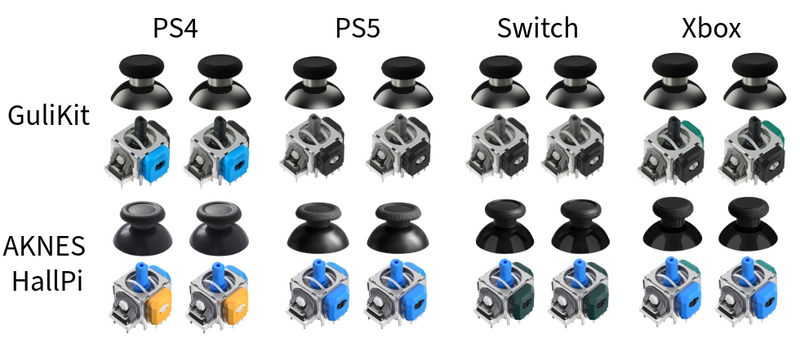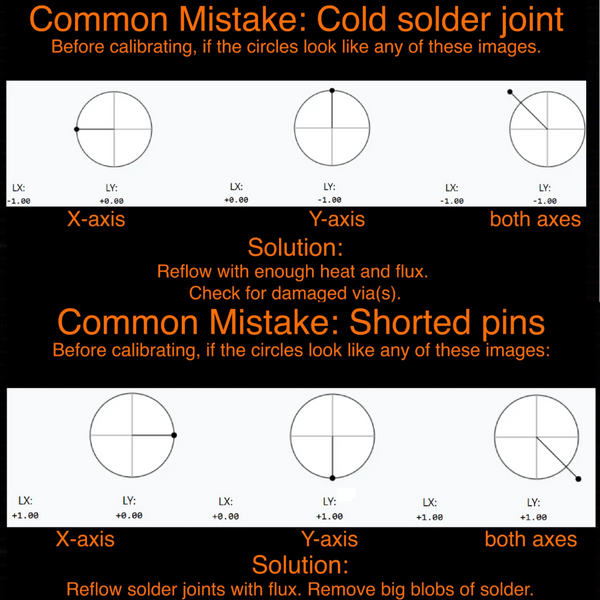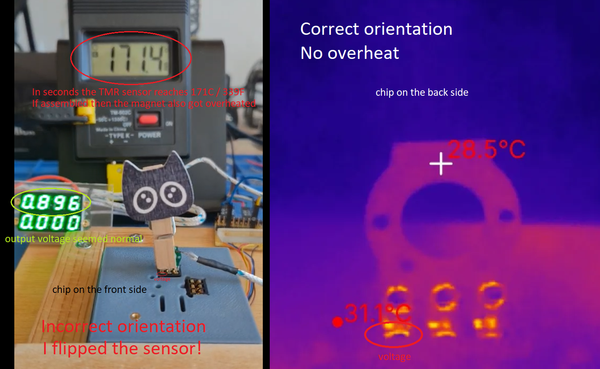1. What is the difference between GuliKit TMR and AKNES HallPi TMR?
1) Same: technology, chips, materials, factory - HallPi.
2) Different: appearance color, caps, price.
3) In addition, as long as buy from AKNES, whether it is GuliKit's or AKNES HallPi's, we will testing(By AKNES community members) and do QC.
If there are any quality issues, we will provide after-sales service/support.
4) Starting from 2025, we have been continuously upgrading the TMR of AKNES HallPi based on user feedbacks, and we are now testing and mass producing V4.
V5 will also be tested and mass produced in September 2025.
5) Regarding the price, why are the two prices different?
AKNES HallPi: HallPi → AKNES.
GuliKit: HallPi → GuliKit → AKNES.

2. How to replace/install/solder the joystick of DS4/PS4 controller?
3. How to replace/install/solder the joystick of DS5/PS5 controller?
Video on the link:
For DS5:
https://youtu.be/mFFbMIAVoeg?si=1J1TuCFmIaTkejez
For DS5:
https://youtu.be/mFFbMIAVoeg?si=1J1TuCFmIaTkejez
Calibration tool:
4. How to replace/install/solder the joystick of Switch Pro controller?
Video on the link:
For Switch Pro controller:
https://youtu.be/ERu-zamf3ZQ?si=L2kHxIYci9uAHNSf
Calibration tool:
Go to the Switch console's Settings -> Controllers and Sensors -> Calibrate Joysticks, and follow the instructions to calibrate the joysticks.
Note: The calibration data of the Switch controller is saved on the Console. If you use this controller on a PC, its calibration data will not be synchronized.
5. How to replace/install/solder the joystick of Xbox Series controller?
Video on the link:
For Xbox Series controller:
https://youtu.be/kvKyCoHssRs?si=lCtui4cWxBPx7Ih_
Calibration tool:
Download the "XBOX Accessories" software from the Microsoft Store on PC, then find the "Recalibrate" option and follow the instructions to calibrate the joysticks.
Note: When using the calibration app on xbox, you need to use it really slow.
The Xbox App is not very good, it only compensates for low range after the user stays in a certain position for some time.
If you do the circles fast, whenever you pass on the top area, the app considers you completed the turn and after 3 turns it moves to the next step without having expanded the range.
6. Frequently asked questions about solder joints

7. Common problems with abnormal joystick input values after welding and before calibration

8. After installation, there is something wrong with the input of R3/L3
Generally there are three aspects:
1) The flux accidentally flows into the joystick module.
Use isopropyl alcohol to clean.
2) During the soldering process, there is a problem with the solder joint, or the circuit of the PCB board is accidentally damaged.
3) Product QC problem.
If you don't know how to distinguish, you can join our community.
(Search AKNES on discord)
9. What should I pay attention to when I disassemble the joystick?
An accidental flipping of a sensor.
It all goes up to very high temperatures, very fast - sensor and magnet get overheated to 171C / 339F.
Afterwards they may still seem somewhat functional, but this sensor is wasted, unreliable.

- Cradits to Paulo
